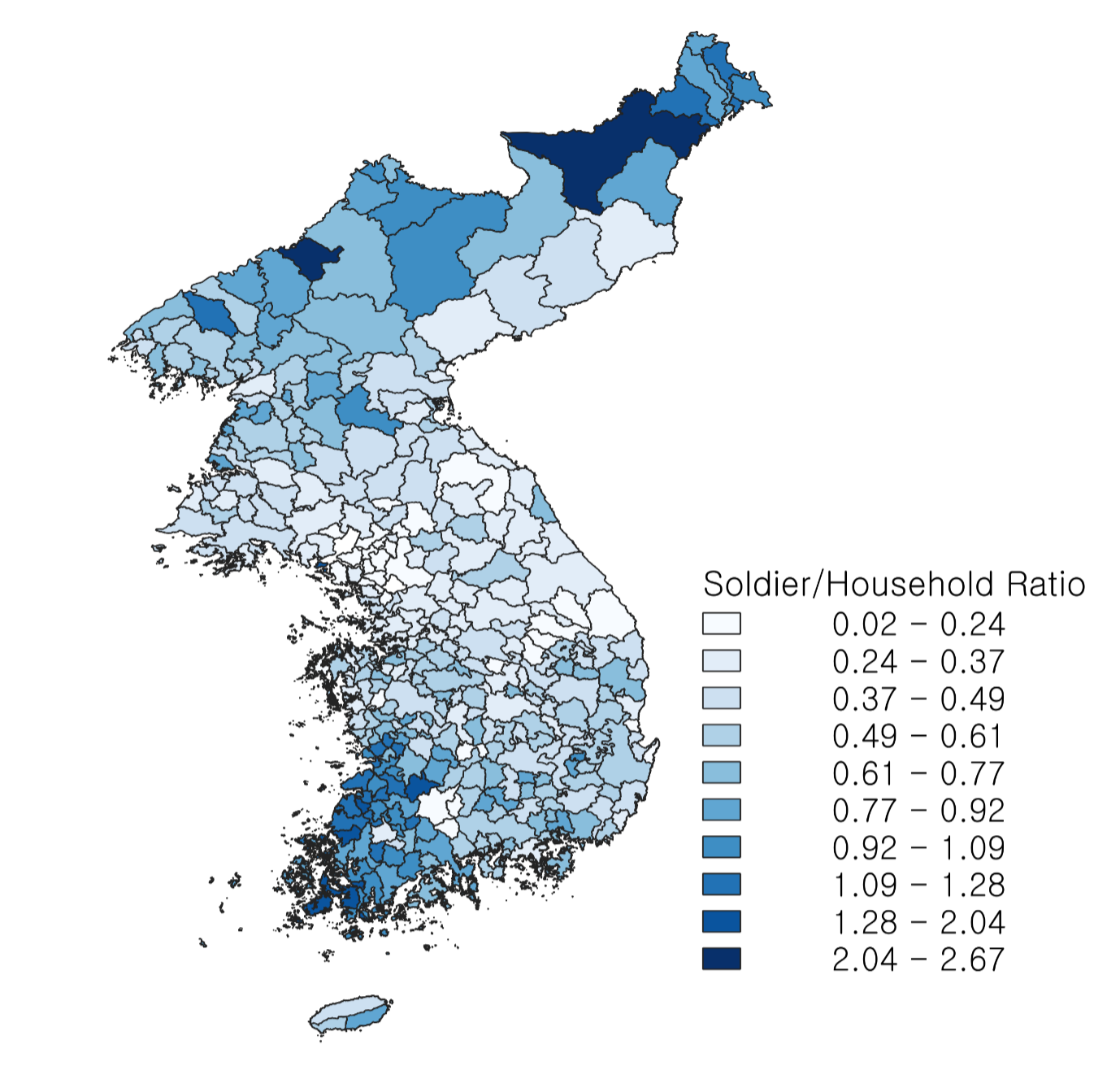time zone will be applied.
Report this post?

Presented by Kunha Kim, Research Professor, Sogang University.
The event will take place on Oct 27, 04:00 - 5:30pm (LA Time) / 07:00 - 08:30pm (New York Time) / Oct 28, 08:00 - 09:30am (Seoul Time).
Please register: https://us02web.zoom.us/meeting/register/EJ_jKUdBRfKzGTSh0p5k9A
In this talk, Kunha Kim examines whether the military service system of early Joseon Korea was fair, using a digital historical approach that combines textual analysis, statistical measurement, and spatial visualization. The Joseon dynasty proclaimed a principle of conscription proportional to households and population, yet it has remained unclear to what extent this principle was actually implemented and whether military obligations were equitably distributed across regions. To address this, the study analyzes the Sejong Sillok Jiriji (1454), a unique nationwide record that lists the number of households, population, and soldiers for 334 localities in a standardized format. By applying text mining to its XML files, I constructed a machine-readable dataset, which was then processed into CSV and GIS layers for quantitative analysis.
The results confirm that households and soldiers were closely correlated (r > 0.99), suggesting that the legal principle of population-based recruitment was broadly observed in practice. However, inequality indices reveal significant regional disparities. The Gini coefficient of 0.293 indicates a medium level of inequality, with burdens heavier in border and coastal regions, and lighter in inland areas near the capital. The Theil index decomposition further shows that 61% of inequality originated within provinces rather than between them, highlighting structural imbalances at the county level. These results suggest that although the principle of household- and population-based conscription was implemented nationwide, the system was neither uniformly fair nor entirely arbitrary, but rather strategically adjusted in accordance with geographical and political factors. By integrating digital methods into the study of premodern institutions, this research demonstrates how quantitative and spatial analyses can uncover hidden dimensions of fairness and inequality in historical governance.
Kunha Kim is a Research Professor at Sogang University. He received his Ph.D. in Korean History from Sogang University in 2023, specializing in the military institutions and socio-economic dynamics of the Joseon Dynasty. His research primarily examines the transition from military service to military taxation, the practice of substitution, and the fairness of conscription in early Joseon Korea.
Dr. Kim previously served as a Research Assistant Professor at the Center for Digital Humanities & Computational Social Sciences (DHCSS) at KAIST, where he explored the integration of computational methods with historical research. He has also taught courses on Korean history, digital history, and GIS-based mapping at Sogang University, Korea University, the Korea Air Force Academy, and the Korea Armed Forces Nursing Academy.
Dr. Kim actively presents his work at academic conferences both in Korea and abroad, and continues to publish on topics related to the military system of the Joseon dynasty and the methodologies of digital history. His broader academic interest lies in using digital tools—such as text mining, quantitative analysis, and GIS—to uncover new insights into fairness, inequality, and state capacity in premodern Korea.
Hosted by the Choson History Society
https://www.chosonhistorysociety.org/